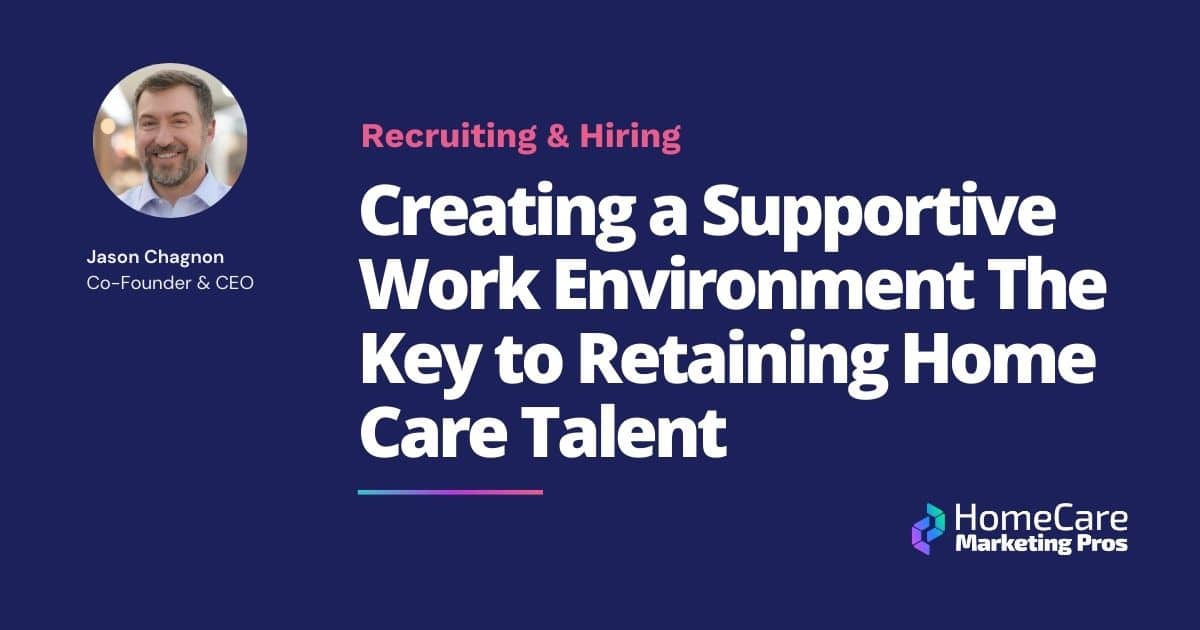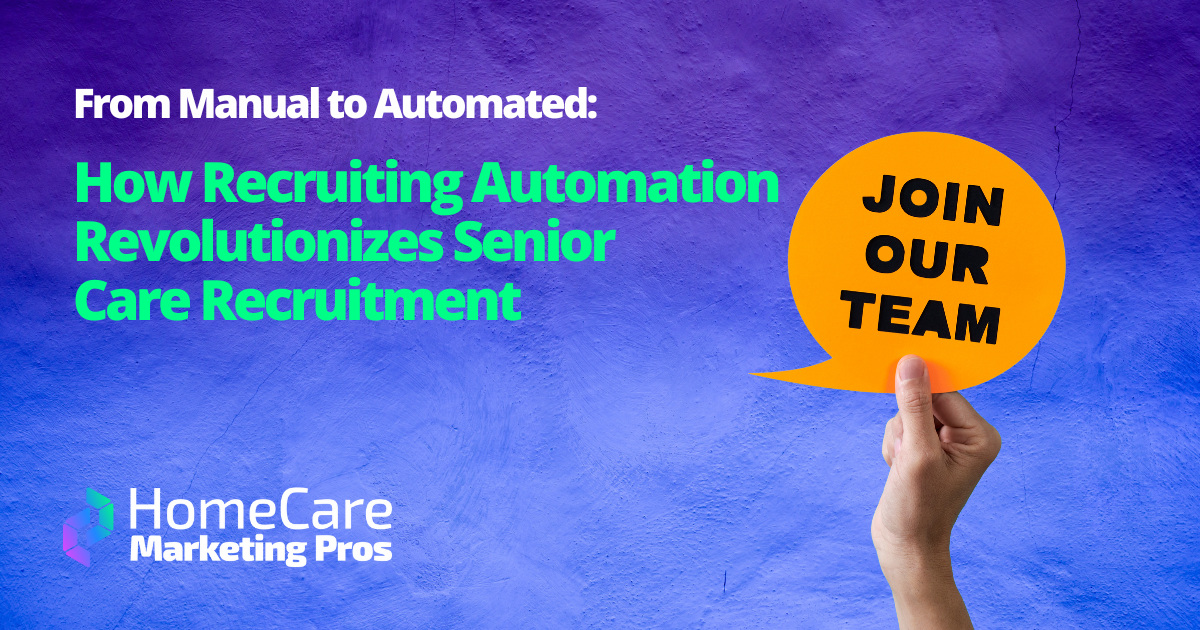How to Start Recruiting the Great Caregivers You Need for Your Home Care Agency
8 basic steps to build a caregiver recruiting program that delivers results

A home care agency is only as good as its caregivers. If you’re going to build the very best agency, you’ll need to recruit the very best, most highly qualified staff.
Never underestimate the basics of a thoughtful and detailed recruiting program. Get started with these eight basic steps to recruiting great caregivers.
1. Decide what you’re looking for
Making a bad hire can cost you $15,000, according to CareerBuilder, so being thoughtful at the job description stage can be a major cost-saver.
Avoid arbitrary requirements like years of experience. What really matters: eight years of experience or a consistent record of excellent client care? Unnecessary requirements like this can prevent qualified caregivers with, say, six years of experience from applying to your agency.
When selecting must-haves and preferred skills, consider that skills can be taught and experience can be gained. Attitude and adaptability are harder to instill. Hire for potential.
2. Write detailed, but concise, job descriptions
More than half of job seekers say the quality of a job description is a major factor in their decision to apply.
Shorter job descriptions tend to perform better than longer ones, getting 8.4% more applications on average. The sweet spot for word count is 301–600 words.
- 93% of the top-performing job postings include clear job titles
- 61% of job seekers expect to see information about company benefits in a job description
- 72% of job seekers say it’s very important to see details about company culture in a job description
- However, according to some surveys, candidates say compensation is the most important component of a job posting
3. Train your managers for quality and consistency of hire
In order to provide a consistent recruiting experience and hiring results, hiring managers, and anyone involved in the interviewing process, should be trained on best practices. This includes:
- Rubrics for scoring candidates
- Questions that can be asked
- Questions that cannot be asked
- What kinds of coaching and guidance interviewers can provide
- Accurate information about the agency and who can answer those questions
4. Build a rich and diverse talent pool
Diverse teams outperform homogeneous ones, and diverse teams are built from diverse talent pools. In order to get there, you must build an inclusive recruiting process and tap a variety of sources.
- Source candidates from local universities and community colleges.
- Run social media ad campaigns to attract passive job seekers.
- Re-engage promising candidates that didn’t make it through a past hiring round.
- Offer skills training programs to attract community members who need help getting their foot in the door.
- Consider an employee referral program. Companies can expand their talent pools by 10x by recruiting from their employees’ existing networks. But don’t recruit only from employee networks, which can lead to homogeneous recruiting pools.
Don’t forget to nurture and develop your talent pool. Keep your caregiver leads warm by staying in contact even when you’re not actively hiring.
5. Coach candidates to success
Don’t be afraid to coach caregiver candidates through your recruiting process. This means clearly outlining the steps—from application to hire—telling them exactly how they’ll be evaluated, how long the process can take, and whom they can contact (a real person) when they have questions or feel stuck.
6. Automate the process
The top job prospects are on the market for only 10 days, so there’s no room to waste time. Automating the caregiver recruiting experience can save your recruiters and hiring managers time, save your home care agency money, and reduce time-to-hire and cost-to-hire.
7. Design a consumer-grade candidate experience
Competing for the best caregiver talent requires a consumer-grade candidate experience. This means treating prospective hires with the same standards of quality you would your agency clients.
Here are a few tips:
- Provide a human point of contact candidates can reach out to.
- Outline the hiring process in detail and make expectations and evaluation criteria clear.
- Ask candidates for feedback throughout the hiring process.
- Recruiting automation can improve the candidate experience by making the process faster, more consistent, and even more personal.
- Ninety-four percent of job seekers want feedback if they’ve been turned down for a job, so let them know where they stand, even if you don’t hire them. This might bring high-potential candidates back to you in the future when they’re ready.
8. Plan for retention
Recruiting great caregivers isn’t done once the offer letter is signed. It extends through the onboarding process to the day they leave your home care agency. Just like a bad hire can cost you $15,000, it’s worse to lose a good one. The average cost of losing a good employee is $30,000.
- Onboarding: A good onboarding process can increase retention by 82%.
- Learning and development: 63% of employees who left a job in 2021 say it was because they lacked advancement opportunities.
- Healthy culture: According to the same study, 57% say they left because they felt disrespected.
- Manager training: Managers have an outsized impact on employee retention. Train your managers to lead inclusively and supportively, and you’re more likely to retain your workers.
- Recognition: 68% of HR professionals say employee recognition programs increase retention (and 56% say it increases recruitment).
Ready to start recruiting the great caregivers your agency needs?
Home Care Marketing Pros can help your agency boost its recruiting process and get you the great caregivers you need! Contact us today to see how.













